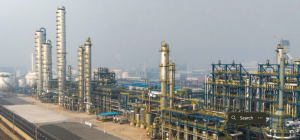China has initiated test runs for the world’s largest coal-based ethanol production plant in southeastern China, marking a significant step in utilizing coal as a raw material to produce ethanol. With an annual capacity of 600,000 tonnes, the plant aims to alleviate pressure on China’s food sources by using coal instead of crops, ultimately reducing dependence on fuel ethanol imports.

Ethanol, a clean and renewable energy source with properties similar to petrol, is a valuable chemical used as a petrol additive. Anhydrous ethanol, with a concentration exceeding 99.5%, can be blended with petrol to enhance fuel combustion performance and improve exhaust emissions.
Traditional ethanol production from crops such as corn or sugar cane competes with food supply, a challenge compounded by rising grain prices in China. The new coal-based production process, developed by the Chinese Academy of Sciences’ Dalian Institute of Chemical Physics (DICP) in collaboration with the state-owned Shaanxi Yanchang Petroleum Group, utilizes low-grade coal, an abundant resource in China, potentially saving millions of tonnes of grain annually.
The technology employed, known as DMTE, produces methanol from coke oven gas, a by-product of coke production. Methanol then reacts with other materials to generate ethanol, enabling large-scale production not only from coal but also from natural gas or gas from steel plants. China is the only country known to have deployed this technology on an industrial scale.
According to the DICP report, ethanol produced through this method possesses dual characteristics, serving as both an excellent energy product and a bulk chemical raw material. It can be transformed into ethylene or replace ethylene in various chemical reactions, contributing to the production of numerous related products.
China, facing a significant demand for fuel ethanol, produced approximately 2.7 million tonnes of fuel ethanol through the fermentation of aged grain last year. However, a market gap of 10 million tonnes led to heavy reliance on imports. The coal-to-ethanol technology, developed by the DICP team since 2010, has seen continuous improvement, and the recent test runs represent a milestone in achieving international standards in coal-to-ethanol production.
With 13 industrial facilities, including two overseas, planning to use DMTE technology, the total ethanol production capacity is expected to reach 3.95 million tonnes per year. The advancements in coal-to-ethanol production contribute to China’s goals related to food security, energy security, and the chemical industry supply chain.
Read Also – Chaos Erupts at Grand Central Terminal: Alleged Racist Stabbing Leaves Two Teens Injured

